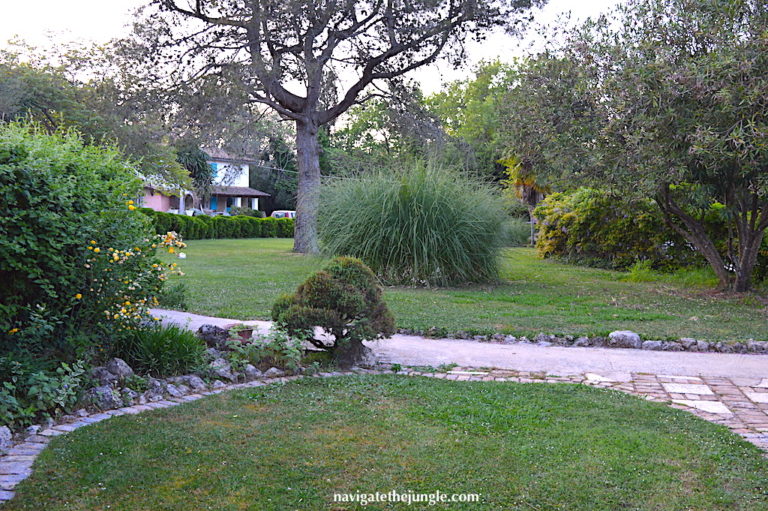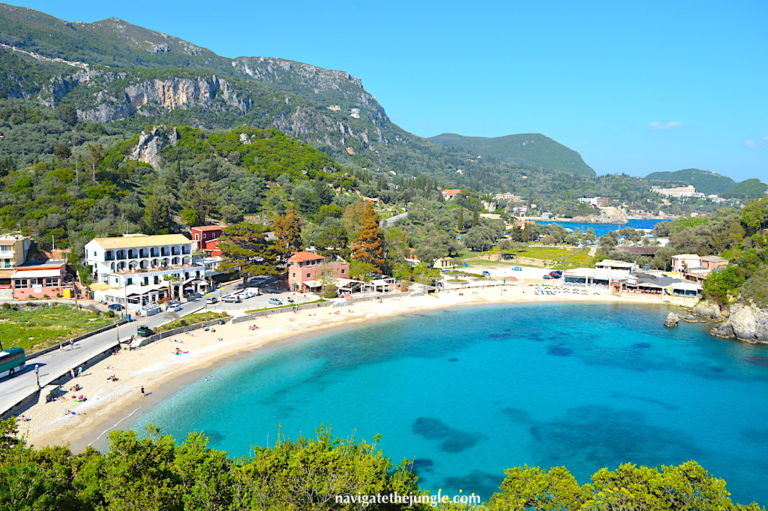A brief history of Corfu Old Town
A tour or Corfu old town, like that of Split, Dubrovnik, Kotor or Budva is a walk-through centuries of history. The Eretians, originally mentioned in Homer’s Iliad, are thought to have settled here, annexing this Ionian island to Greece. This dates the possible settlement history of the island back to the 8th century. The Corinthian’s arrived shortly after forming a settlement on the Peninsula of Kerkyra, where Corfu Old town now stands.
Following centuries of conquest and loss by the Rome’s Eastern Empire or Byzantines, Goths, Normans, Angevins (Naples) and Venetians, the Venetian’s finally took control of Corfu from 1386-1797. However, the two hills of Corfu were already fortified by the Byzantines – the Castel da Mare or Old Fort by the sea and the Angevins, Castel di Terrra or New Fort on land. Much of what we see today can be attributed to the Venetians. However the French, British and Greeks post 1797 have also left their mark on the Old Town.
Start your walk of Corfu at the Old Fort
The Old Fort is visible from much of Eastern Corfu. An early start is essential to avoid the crowds that descend on the town from cruise ships. There is a lot to see and a large area to walk around in Corfu’s Old Fort. For a more detailed explanation and photos of the Old Fort visit our blog on Corfu’s Old Fort. The exploration of the Old Fort took us the best part of a Sunday morning. By the time we had come down from the citadel, the town was buzzing with visitors from the cruise ship.

Stroll through the Spianada
The Spianada is the parkland in front of the Old Fort and is also a contribution by the French. Stroll east along the Agoniston Polytechnou street. Once through a small kid’s playground head towards the Palace of St Michele and St Girogio on the northern side of the Spianada.

Palace of St Michele and St Girogio
This beautiful colonnaded neo-classical building now houses the museum of Asiatic art. On display here is mainly Oriental art, but Hindu, Jain and Buddhist religious art can also be found. It was built between 1819 -25 by the architect George Whitmore and is thought to be the only example of Georgian architecture in the Mediterranean. The English Commissioner in charge during this period was Sir Thomas Maitland, who used the building as his residence. Subsequently the residence was used by the Greek Royal Family.

Buzzing Liston street
On the west side of the Spianada is the Liston, the architecture is by the French engineer Lesseps who got his inspiration from the Rue Rivoli in Paris. This was during the French-Napoleonic period in Corfu. It has become the focus for tourists, due to the abundance of cafes and coffee shops. Many international cafes dominate the Liston, but head for those run by locals, especially those on the streets behind the Liston.
St Nicholas Gate & lunch on the water’s edge
After visiting the Museum of Asiatic Art, head through the colonnaded verandah and turn right on Kapodistrou street. Our lunch stop, once through the Nicholas gate, was at the Café Restaurant En plo (sail-in) right on the water’s edge. The St Nicholas Gate is one of the four gates into the city on the fortification wall. It was built by the Venetians between 1576-1588.

The gate was originally part of the ground floor of the Corfu town’s military hospital. Much of this building was destroyed by the British to make way for the construction of the Palace of St Michael and St George. The arch surviving is no more than 10m long and still has the emblem of the Serenissima Republic of Venice, the winged lion of St Mark.
The setting of En plo restaurant was absolutely perfect. Located right by the water’s edge, the back drop is of the Old Fort and Mandraki Port with its colourful sailing vessels. Sadly, the chicken souvlaki and tuna salad left a lot to be desired. Behind the restaurant locals sunbathed or jumped into the cool waters for a swim.


Church of the Most Holy Virgin Kyra Antivouniotissa
After lunch, we returned through the St Nicholas gate to continue our walk around the bay on Arseniou street. Below us on the edge of the fortified wall, swimmers and sunbathers had taken up every possible position on the limited somewhat rocky shore. Along the narrow Arseniou street the city tour bus hogged the road.

About 10mins after we left our lunch stop we had arrived at the Byzantine museum of Antivouniotissa. Until as recently as 1979 it had belonged to a few private Greek families. Since then it was handed over to the Greek state so long as it was maintained as a museum. There is a short climb up some steps to reach the entrance from the Arseniou and the entrance fee cost 4 euros. The structure is a single-aisle with a timber-roof and features the Corfiote church architecture of the period, namely having an exonarthex or long narrow enclosed porch. In this case on 3 sides. The probable construction date is thought to be in the late 15th century which would make it more Venetian rather than Byzantine?
The interior of the Church is well worth visiting. It has some of the most beautiful and detailed medieval paintings. The paintings depict various figures from the Christian religion, the colours still as vivid. The alter is unsurprisingly ornate as is the artwork on the walls and ceilings. The rich colours and subtle lighting provides a profound experience. The upper wooden floor is a lot simpler in design. However, it provides magnificent views of the lower floor and allows examination of the ceiling designs in more detail. On a Sunday, the church closes at 2pm.
Old Port and Harbour
From the Arseniou street turn left onto the Donzelot street following the coastline, now dominated by the harbour. On the land side are some novel buildings designed to fit into every available space. Narrow alleyways intertwine between these buildings. The Old Port is dominated by the New Fort and today a couple of dominant cruise ships have docked. The Old Port grounds are essentially a car park. Walk past the lively street cafes and bars towards the New Fort, past the Venetian Military Barracks of Spilia.

The ‘New Fort’
The New Fort was also built during Venetian rule and work is estimated to have begun around 1577, although the precise date is unknown. It is built atop St Mark’s hill, one of the twin peaks of the city of Corfu and marks the western boundary to the city. The lower fortifications are Venetian built, some of the buildings inside are British built and subsequently around 1864 the Greeks influenced the layout.

We walked up Dion Solomou, past some historic churches and clothes lines strung across the street. At the end of the street, climb the steps to the fortified wall where the entrance is located. Unfortunately, it was Sunday, and historic buildings close at 2pm. We therefore had to satisfy ourselves by walking around the fort. Turn left at the ticket office and walk through the stone tunnel to arrive on the western side of the New Fort.

In front is the Garaz Markara or market which again was closed! Finally, our walk through Corfu Old Town took us to Evg Voulgareos, Corfu’s main street. It is on this street that one can find the remains of the ‘Royal Gate’, one of the 4 gates into the city.
UNESCO Corfu
The whole of Corfu old town which includes the New Fort and the Old Fort and the town inbetween is designated as a UNESCO World Heritage Site. Walking through the streets of the ancient city it is not hard to see why. It is easy to wonder through the town, stopping at the many squares for a coffee or visiting one of the many churches that dot the city. The Church of St Spyridion, the patron saint of Corfu, is one that is also worth a visit. In short, it is best to explore the city on foot and wonder off in any direction – you really can’t get lost here.

Nangle facts & tips
We stayed at the eco-retreat Casa Lucia, Sgombou, about 20minutes drive outside town.
April is outside the main tourist season in the rest of Corfu i.e. outside Corfu Old Town. However, it is one of the best times to visit Corfu.
Nangle angle
Visit Corfu Old Town early to avoid the hoards that descend from the cruise ships. Support local enterprises for lunch and memorabilia.




